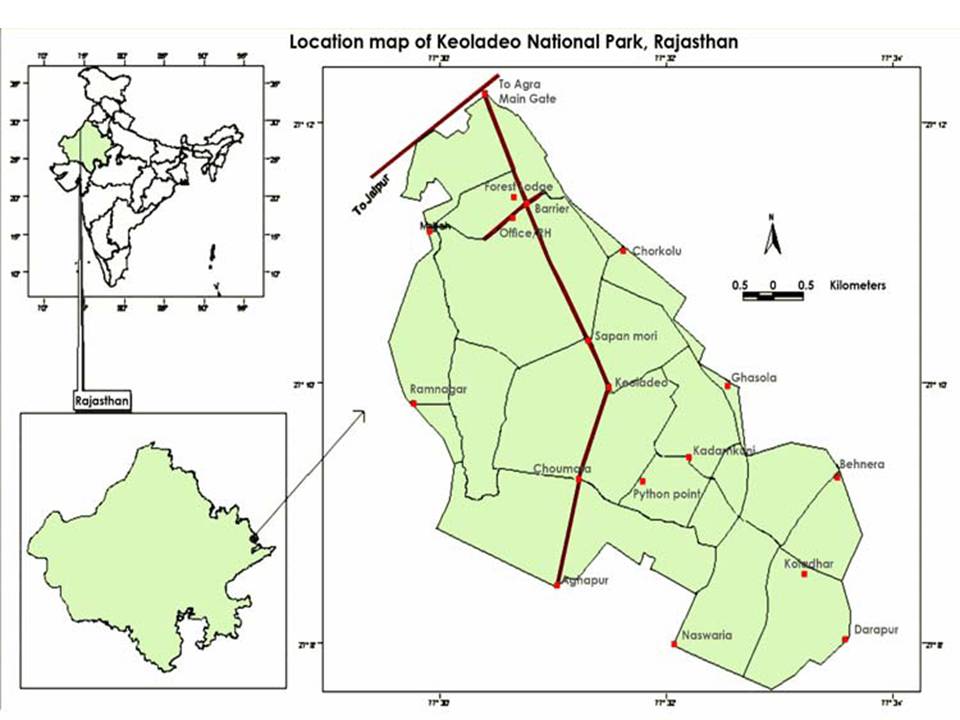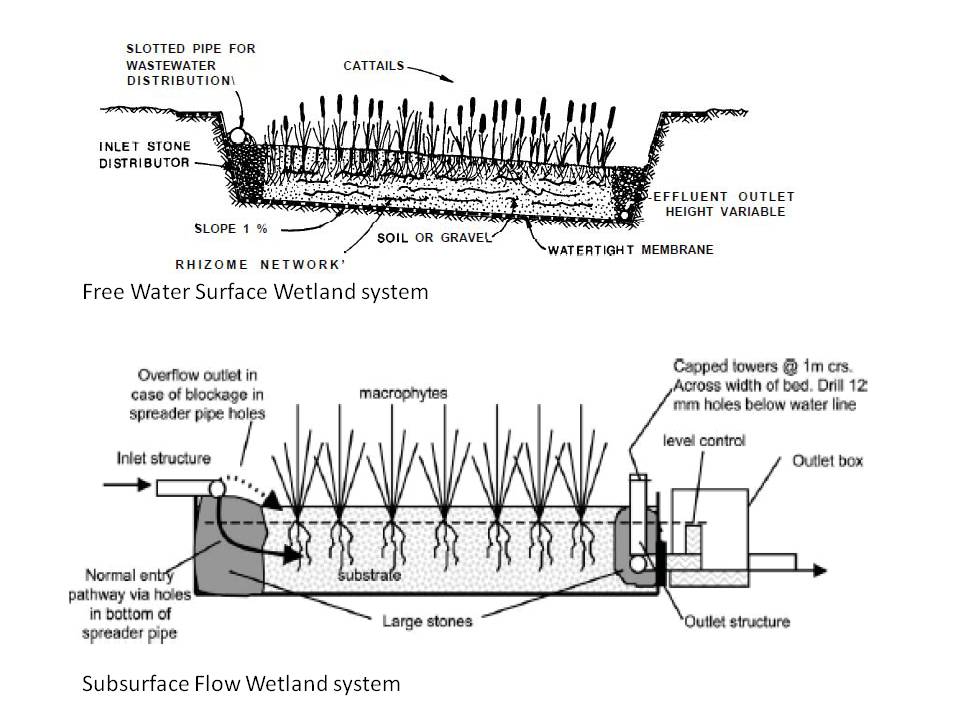The introduction begins witha brief overview of wetlands: their nature and services offered. These wetlands are ecosystems with water that is static or flowing and characerized by emergent , floating and submerged aquatic vegetation. Some of the services provided by wetlands are fish and fiber, water supply, water purification, flood regulation, recreational opportunities and tourism. It then details the importance of wetlands for water purification.Toxins enter the wetlands through farms, factories and runoff. These toxins are broken down or otherwise buried using a variety of bacteria.

Location map of Keoladeo National Park
In the next section, the authors present a study of Keoladeo National Park, which is a natural wetland of flood – plain type. The diverse habitats within the park provide shelter to 366 bird species, 379 floral species, 50 species of fish, 13 species of snakes, 5 species of lizards, 7 amphibian species, 7 turtle species, and a variety of other invertebrates. With reference to migratory birds, the biomass has been divided into two categories:
- 'Good': food species that avifauna feed on including Nymphoides indicum, Nymphoides cristatum, Nymphaea nouchali, Nymphaea stellat,
- 'Bad': This is the excess of wild grass paspalum distichum which restricts the growth of food species.
The chemical fertilizer upstream deteriorates the water quality of the wetland. Construction of an artificial wetland in the vicinity of the natural one would restore the water quality standards. While vegetation plays a critical role in BOD removal and denitrification, a crucial factor while designing modifications to enable waste water treatment will be to control the balance of the 'good' and 'bad' biomass.
The last section examines the role of constructed wetlands for water pollution management, which potentially perform better than conventional waste water treatment methods including for heavy metal contamination. These offer a land-intensive, low-energy, and low-operational-requirements alternative to conventional treatment systems.
The main components of a constructed wetland are the design, soil, and vegetation. The design and construction of free water surface wetland systems and constructed wetlands with horizontal subsurface flow are dealt with in detail.

Cross-sections of constructed wetlands
Performance evaluation: Wetland systems significantly reduce biological oxygen demand (BOD), suspended solids (SS), and nitrogen, as well as metals, trace element, and pathogens. The basic treatment mechanisms include sedimentation, chemical precipitation, adsorption, and microbial degradation of organic matter, Suspended solids and nitrogen, as well as some uptake by the vegetation.
The paper concludes that constructed wetland are a cost-effective, low-maintenance, affordable, resilient and flexible technology for waste water treatment.
Download the entire paper here.
/articles/wetlands-water-quality-management-science-and-technology-paper-current-issues-water